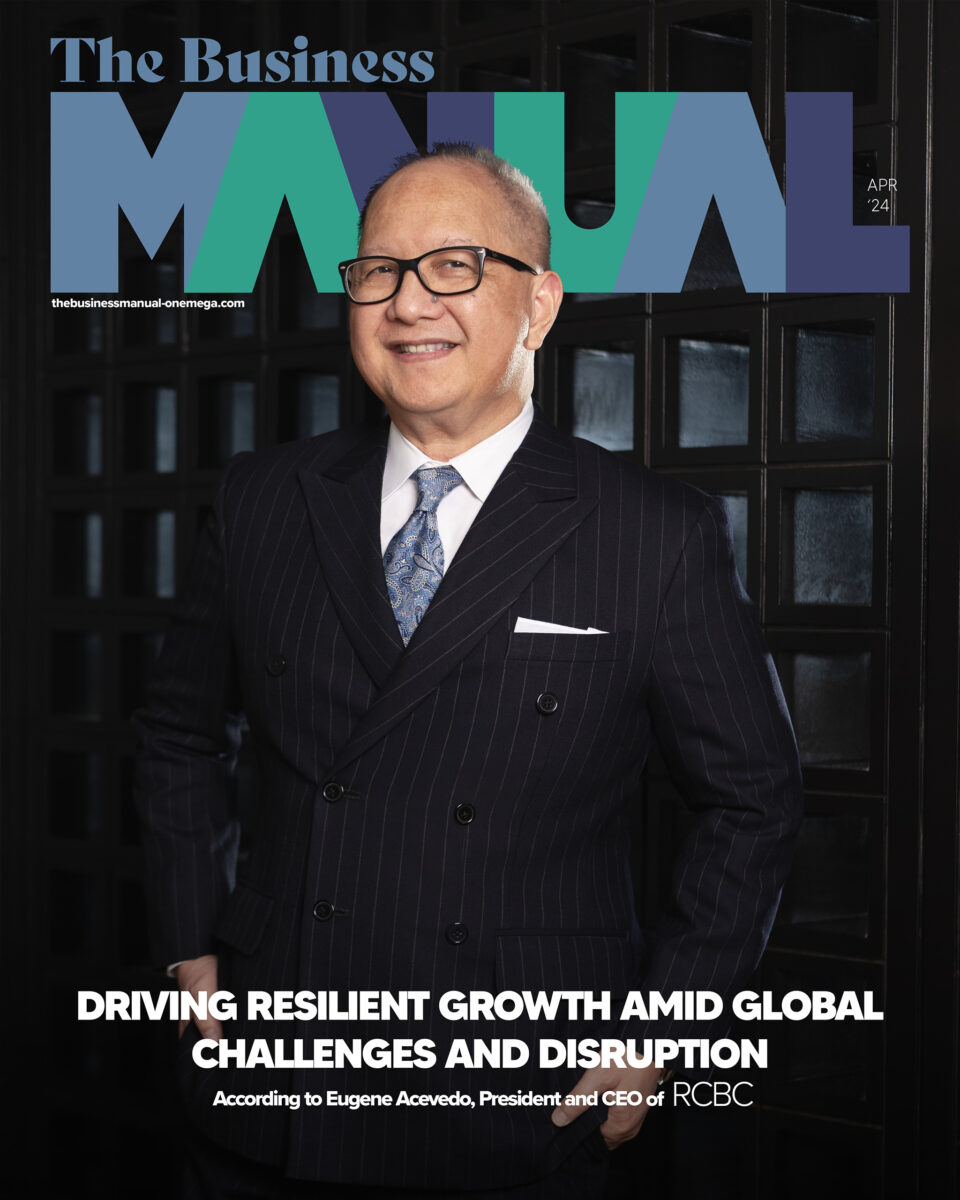[ASK TBM] How to Start an Online Beverage Business?

Starting a beverage business, especially online, can be very daunting. Kim Ruiz, the owner of Daily Matcha, shares tips and advice for aspiring business owners.
According to a report by Statista, the revenue for the beverage market is projected to reach $551.40 million (approximately PHP 30.80 billion) in 2023. Moreover, revenue is expected to result in a projected market volume of US$955.40 million (around PHP 53.30 billion) by 2027. And this encompasses both alcoholic and non-alcoholic beverages, as well as hot drinks and other types of beverages.
Given these numbers, it can be very enticing to start a beverage business—even just online, especially since it sounds easy. But when you actually get into the spirit of things, you’ll find that it’s easier said than done, especially when factors like how to market your products, how to package and deliver them to customers, and how to maintain their shelf life come into play. Among even more reasons, of course.
But if this type of business is something you really want to get into, don’t worry. We asked for some tips and advice from someone with firsthand experience in starting a beverage business. Here is what Daily Matcha owner Kim Ruiz has to say.
Why did you choose to invest and start a business in the food and beverage industry, specifically focusing on the market for matcha drinks?
The market for matcha drinks—although growing—still presented a niche within the broader food and beverage industry. I recognized that by specializing in matcha, I could differentiate my business from competitors and offer a distinctive product to a specific target audience.
[Combining] my passion for matcha, interest in health and wellness trends, while leveraging the unique attributes of matcha, and appreciating its cultural significance, I saw an opportunity to create a business that offered a differentiated product. [Which aligned] with my personal values.
Matcha is a finely ground green tea powder with a rich history and cultural significance that captured my attention and ignited a passion within me. I was drawn to its distinct flavor, vibrant color, and the mindfulness it represented and how it can be incorporated into a healthy lifestyle. My personal love for matcha and its numerous health benefits made it a natural choice to pursue as a business opportunity.
Were you always knowledgeable about matcha and coming up with beverage recipes? How were you able to acquire the knowledge and skills related to your product?
No, I did not have prior extensive knowledge about matcha or beverage recipes when I started my business. However, I was passionate about the product and committed to acquiring the necessary knowledge and skills to create exceptional matcha drinks.
Here’s how I acquired the knowledge and skills related to my product.
First, through thorough research and study. I embarked on a journey of self-study and extensive research to understand the history, production methods, health benefits, and cultural significance of matcha. I delved into articles, online resources, and reputable sources to gather information and deepen my knowledge about matcha.
Second, I did testing and experimentation. I dedicated significant time to tasting various matcha products and experimenting with different brewing methods, flavor combinations, and recipe variations. This hands-on approach allowed me to understand the nuances of matcha flavor profiles, texture, and how it interacts with other ingredients. Through trial and error, I refined my recipes to create exceptional matcha drinks.
Lastly, customer feedback and continuous learning. Customer feedback played a vital role in shaping my knowledge and skills. I actively sought feedback from customers, listened to their preferences, and incorporated their suggestions into my product development and recipe refinement processes. This allowed me to better understand customer needs and tailor my matcha drinks to their preferences.
Acquiring knowledge and skills related to matcha and beverage recipes is an ongoing process. I continue to explore and learn, staying open to new ideas and innovations in the industry to further enhance my product offerings.
Through a combination of research, experimentation, continuous learning, and customer feedback, I was able to acquire the knowledge and skills necessary to create my own matcha-focused menu and develop unique recipes that resonate with my customers.
What kind of equipment, materials, and the like did you have to invest in to grow your business?
To grow my matcha drink business, I had to invest in various equipment, materials, and other essential items. Here are some of the key investments I made:
- Matcha Brewing Equipment: To prepare high-quality matcha drinks, I invested in specialized matcha brewing equipment. This typically includes a traditional bamboo whisk (chasen) used to froth the matcha, a matcha sifter to remove any clumps, and a matcha bowl (chawan) for whisking and serving the matcha. These items are crucial for ensuring the proper preparation and presentation of matcha drinks.
- Mixers and Kitchen Equipment: I invested in commercial-grade mixers, measuring tools, and storage containers to create smooth and consistent blends. These were essential for incorporating other ingredients, such as milk, syrups, or ice into the matcha drinks to achieve the desired texture and flavor.
- Packaging Materials: To package and present my matcha drinks, I invested in suitable packaging materials [like] eco-friendly cups, bottles, lids, straws, and leak-proof covers. I also sourced sustainable packaging options that aligned with my brand values and customer preferences.
- Ingredients and Supplies: High-quality ingredients are essential for creating exceptional matcha drinks. I sourced premium-grade matcha powder from reputable suppliers to ensure consistency and flavor. Additionally, I invested in other ingredients such as milk, alternative milk options, natural sweeteners, fruits, and flavorings to enhance the variety and taste of Daily Matcha’s drink offerings.
- Point-of-Sale (POS) System: To streamline transactions and manage inventory, I invested in a reliable point-of-sale system. This system helped me track sales, monitor inventory levels, and generate reports for financial analysis and decision-making.
- Branding and Marketing Materials: As my business grew, I also invested in branding and marketing materials to create a strong brand presence. This included designing a professional logo, creating packaging labels, and developing a social media page.
What struggles did you encounter when you were starting out? How did you overcome them?
One of the primary struggles was limited financial resources. Starting a business requires upfront investments, and I had to carefully manage my budget and prioritize expenses. I addressed this challenge by bootstrapping, focusing on essential expenses, negotiating favorable terms with suppliers, and seeking cost-effective solutions. I also explored alternative funding options, such as friends and family investments to supplement any additional capital I may need.
The food and beverage industry—including the matcha market—can be highly competitive. Overcoming this challenge required differentiation and a unique value proposition. I conducted thorough market research to understand competitors and identify gaps in the market. By offering exceptional quality, innovative flavors, and a personalized customer experience, I created a distinct brand that stood out among competitors.
Building brand awareness was also a challenge, especially with limited marketing resources and experience. To overcome this, I developed a strategic marketing plan that included leveraging social media platforms, collaborating with influencers, and creating engaging content. I also focused on providing a remarkable customer experience—aiming to generate positive word-of-mouth recommendations.
Starting a business can be demanding, and achieving a work-life balance can be a struggle. It’s important to maintain personal well-being and prevent burnout. To overcome this challenge, I implemented effective time management techniques, delegated tasks, and set boundaries between work and personal life. I also prioritized self-care activities and surrounded myself with a support network of family and friends.
In summary, the key to overcoming these struggles was a combination of strategic planning, resourcefulness, continuous learning, adaptability, and perseverance. By tackling each challenge head-on and seeking solutions one step at a time, I was able to navigate the early stages of my entrepreneurial journey and build a solid foundation for the journey of Daily Matcha.
What do you consider your secrets to success—especially in the competitive food and beverage industry you find yourself in?
In the competitive food and beverage industry, several key factors contribute to success. Here are some secrets that have helped me navigate and thrive in this challenging environment:
Differentiate your brand and products by offering a unique value proposition. Identify what sets your products apart from competitors, what value you’re adding to their lives, or what problem you’re solving, and communicate it effectively to your target audience. This could be a combination of factors such as the quality of ingredients, innovative recipes, sustainable sourcing, or a compelling brand story.
Consistently deliver high-quality products that exceed customer expectations. Use premium-grade ingredients, focus on taste and texture, and maintain strict quality control measures throughout the production process. Providing a memorable and delightful taste experience will help build a loyal customer base and generate positive word-of-mouth.
A customer-centric approach by putting your customers at the center of everything you do. Listen to their feedback, understand their preferences, and continuously strive to meet their needs. Develop a strong customer service culture and create personalized experiences that go beyond simply selling a product. Building strong relationships with your customers will foster loyalty and advocacy.
Stay ahead of the curve by continuously innovating and introducing new product variations or limited-time offerings. Experiment with different flavors, ingredients, and presentations to keep your menu fresh and exciting. Innovation helps you stand out, captivate customers’ interest, and adapt to changing trends and preferences.
Implement effective marketing and promotion strategies to raise awareness and attract customers. Utilize digital marketing channels, social media platforms, influencer partnerships, and local community engagement to reach your target audience. Develop visually appealing and engaging content that showcases your brand and highlights the benefits and experience you offer.
Never stop learning and seeking opportunities for self-improvement. Stay updated on industry trends, attend relevant workshops or conferences, and network with industry professionals. Embrace a growth mindset and be willing to adapt and learn from both successes and failures.
Kim Ruiz is the owner of Daily Matcha—a business she officially launched in August 2022. Prior to starting her own business, Kim worked in corporate for several years.




